You have 0 product(s) in your cart.
Abyss Scuba Diving
Discover The Ocean's Hidden Gem: The Majestic Blue Dragon
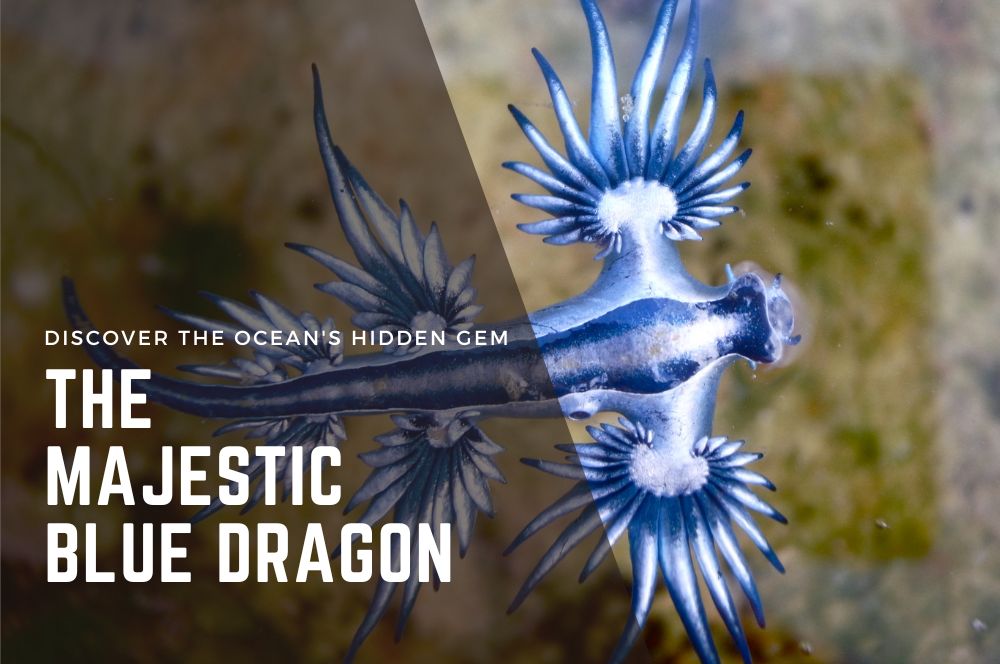
Discover the Ocean's Hidden Gem: The Majestic Blue Dragon
Encountering the magestic blue dragon, or Glaucus atlanticus, is a marine marvel seldom experienced. Prized for its striking blue coloration and formidable defense mechanisms, this sea slug navigates the vast ocean using unique adaptations. This article unveils the blue dragon’s mysteries, from its diet of venomous prey to the challenges it faces in the open seas.
Key Takeaways
-
Glaucus atlanticus, also known as the blue dragon, is recognized for its captivating blue color, ability to store and use stinging cells from its prey for defense, and unique adaptations like floating upside down on the ocean surface.
-
Considered rare and striking in appearance, the blue dragon’s true population size and conservation status remain elusive, with sightings in new locations possibly influenced by changes in ocean temperature and storm patterns.
-
The blue dragon preys on venomous siphonophores like the Portuguese man o’ war, using its radular teeth to consume and store their nematocysts for defense, an ecological relationship that impacts marine biodiversity and predator-prey dynamics.
Mysteries of the Blue Dragon: Unveiling Glaucus atlanticus
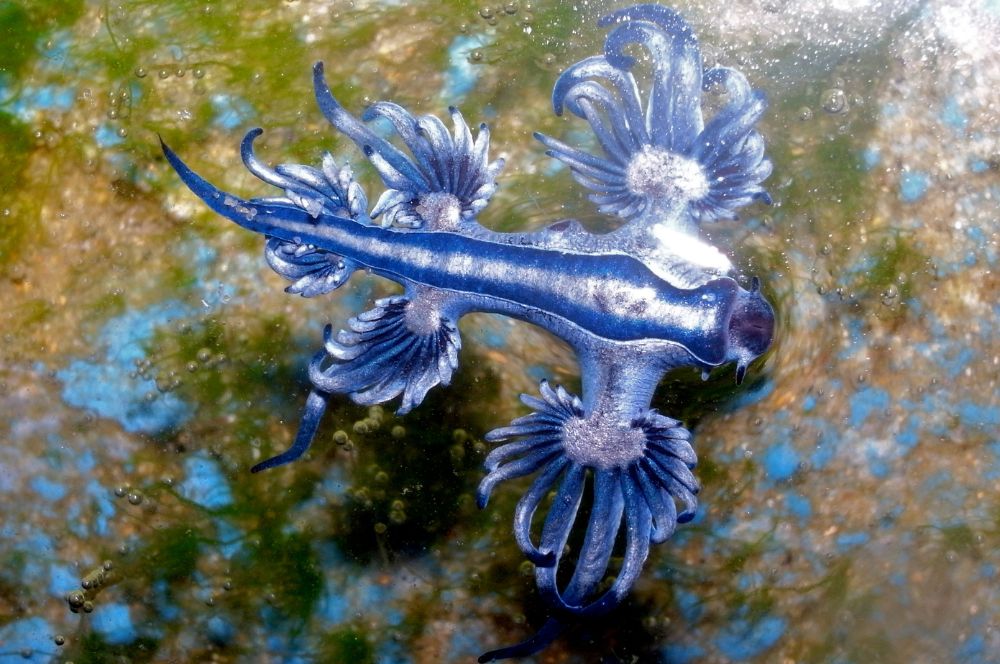
Sailing through the marine currents like an otherworldly apparition, the blue dragon, known scientifically as Glaucus atlanticus, emerges as an icon of marine biology. This sea slug’s rarity and the potency of its sting envelop it in a shroud of enigma, as it glides beneath the ocean’s bright surface. Distinguished by vibrant blue colouration, the blue dragon represents a cryptic species whose allure draws us deeper into the heart of marine biodiversity.
Every graceful undulation of the blue dragon invites us to reevaluate our understanding of pelagic creatures, demonstrating the immense power that even the smallest organisms can hold within their aquatic domain, just beneath the ocean’s surface and above the sea floor. The delicate balance between their captivating beauty and the dangers they pose underscores the importance of conservation efforts to maintain the health of our oceans and the myriad of life they sustain.
The Allure of the Blue Dragon
Among nudibranchs, the blue dragon stands out as a creature of exceptional elegance. Its cerulean hues, adorned with dark blue stripes, captivate the eye, creating a mesmerizing spectacle rarely shown by other pelagic creatures. The blue sea slug’s unique charm is not solely aesthetic; its adaptations, including:
-
the ability to blend against the blue-white coloration of the sea and sky
-
its ability to store stinging cells from the jellyfish it consumes for its own defense
-
its ability to float upside down on the surface of the water
contribute to its allure and rarity.
The reputation of the blue dragon as a rare oceanic gem didn’t happen by chance. Its striking appearance and fascinating biological traits have elevated it to an iconic status in the field of marine biology. Whether basking amidst blue fleets or riding solo on the currents, the blue glaucus captures the imagination, inspiring a sense of wonder in all who encounter it.
Notable Characteristics of Glaucus atlanticus
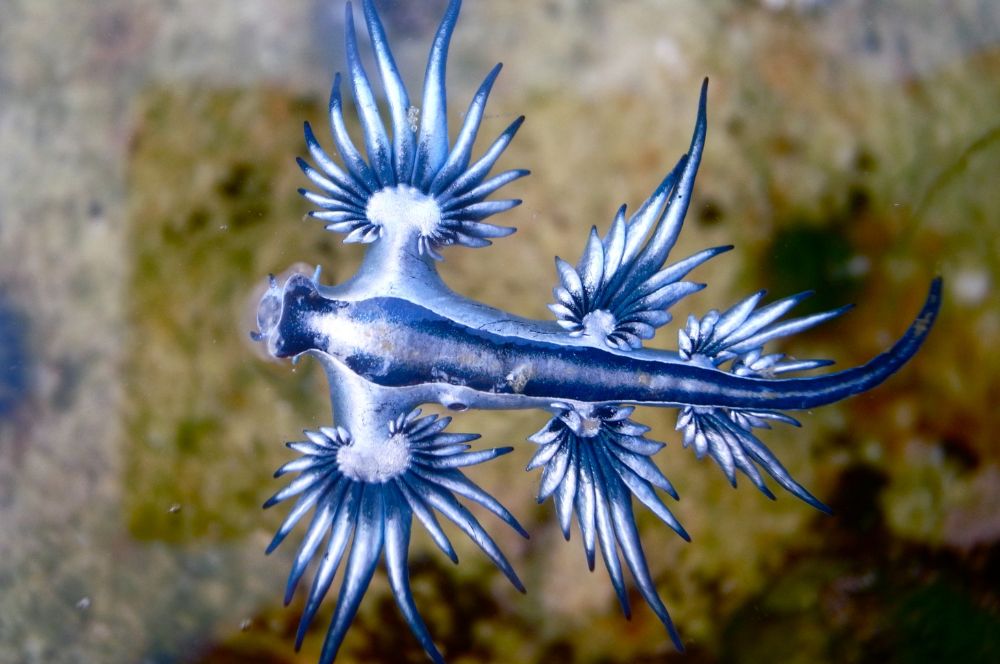
The fascination with the blue dragon extends beyond its exterior. This blue sea slug is renowned for its:
-
Flat, tapering body, which stretches up to three centimeters when fully mature
-
Six appendages known as cerata, which rise from its back like the masts of a ship
-
Vivid dark blue stripes that traverse its pale blue ventrally, with the blue sea slug shown in various images capturing its striking appearance. Enthusiasts can learn more about this fascinating creature on the sea slug forum.
These features, combined with the blue glaucus’s pelagic lifestyle, are accentuated by its distinctive coloration. This coloration is not only beautiful but also holds a significant role in the slug’s ability to navigate the open ocean.
Glaucus atlanticus inhabits a realm that straddles the characteristics of the brightly lit sea surface and the depths below, leading a life dictated by the open ocean, including the arctic and southern oceans. The species’ geographical range is as broad as the ocean itself, with individuals occasionally joining the ranks of other larger pelagic organisms in the vast blue expanse. The atlanticus floats with a grace that belies the complexity of its existence, a testament to the intricate tapestry of life beneath the waves.
The Enigma of Blue Dragon Rarity
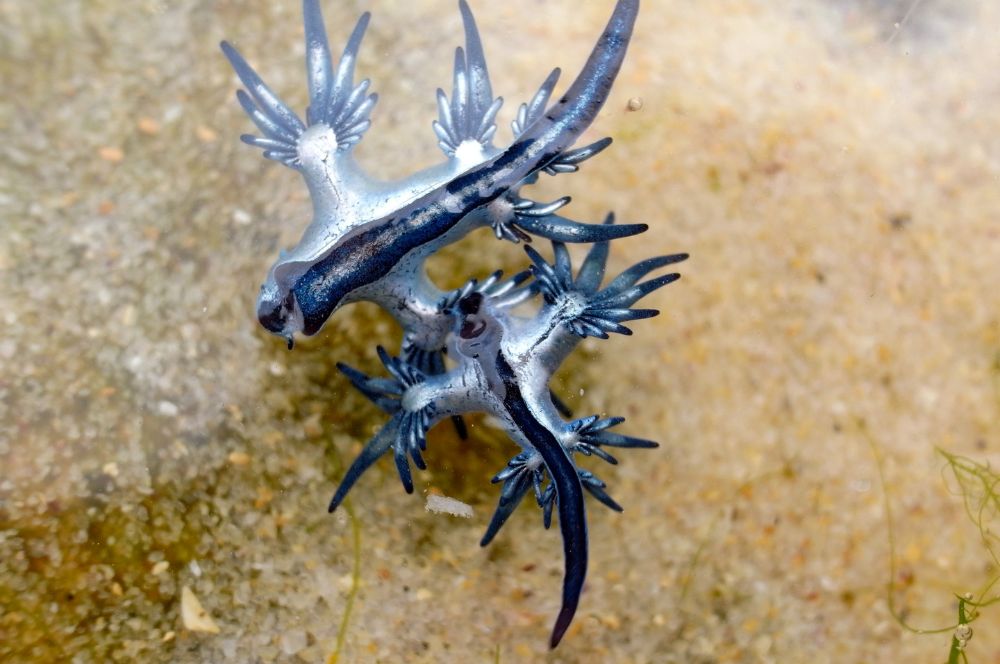
Perceived as rare denizens of the deep, blue dragons present a conundrum to those who seek to understand their place in the ocean’s vastness. While encounters with these blue sea slugs may be a treasure for beachgoers in certain locales, the true extent of their population remains shrouded in mystery. Their small size and the vastness of their pelagic domain make them elusive subjects for study, challenging our ability to quantify their numbers and comprehend their rarity.
The conservation status of blue dragons remains an unresolved mystery. Without a formal assessment by organizations such as the IUCN, the rarity of these blue sea slugs remains a topic of speculation. This ambiguity underscores the need for further research and greater awareness of the species, to ensure that these captivating creatures continue to grace our oceans for generations to come.
Encounters with the Blue Sea Slug
Sightings of the elusive blue dragon have recently expanded beyond their familiar haunts, with individuals gracing the Gulf Coast of the United States and the serene Bay of California. Even the waters around Taiwan have become a canvas for their delicate presence, with blue sea slugs shown in places like Feicueiwan and Xiaoliuqiu. Such sightings captivate the local populace and marine enthusiasts alike, hinting at a broader narrative of this species’ reach.
In Taiwan, a remarkable event marked the presence of multiple blue dragons at once in the coastal waters of the north, stirring excitement and curiosity among observers. These encounters, once considered blue dragons rare, now paint a picture of a species expanding its horizons, charting new territories and inviting us to reconsider our understanding of their distribution.
Factors Influencing Blue Dragon Sightings
The blue dragon’s journey across the seas, including the Indian Oceans, may be influenced by more than just the currents. Changes in ocean temperatures and the frequency of storms are thought to be redirecting their migration patterns, leading to appearances in previously uncharted locations. These pelagic aeolid nudibranchs, which typically bask in the warm embrace of temperate and tropical waters, are now finding new habitats that can support their year-long lifespan.
Where blue dragons may surface is not solely determined by environmental factors. Pollution presents a significant threat, with potential impacts on their visibility and survival. Despite this, the adaptability of the blue dragon is evident, with sightings in intertidal zones and encounters with natural predators like loggerhead turtles, suggesting a resilience that is as deep as the waters they inhabit.
The Diet of the Blue Sea Slug: A Venomous Feast
The blue sea slug’s dietary proclivities are as fascinating as its appearance. With a penchant for the venomous Portuguese man o’ war and the bluebottle jellyfish, the blue dragon turns perilous prey into a source of power. It wields radular teeth with serrated precision to consume chunks of its formidable victims, redefining the boundaries between prey and predator.
The blue dragon’s menu choices have repercussions that ripple through the marine food chain. By feasting on venomous siphonophores, it impacts marine biodiversity and the delicate balance of predator-prey relationships. The ecological implications of such a diet remain a tantalizing mystery, inviting further exploration into the blue sea slug’s role in the oceanic ecosystem.
From Prey to Predator: The Sea Slug Stores Stinging Nematocysts
The blue dragon’s voracious appetite for the Portuguese man o’ war is more than a dietary preference—it is a strategic choice that fortifies its defenses. The sea slug stores stinging nematocysts from its prey, selecting the most venomous for incorporation into its own tissues. This transfer of stinging cells is a remarkable feat, turning the blue dragon into a formidable adversary within its pelagic realm.
When danger looms, the blue dragon unveils its hidden arsenal. The stinging cells, now part of its cerata, become weapons that can unleash a potentially dangerous sting. This biological armor is a marvel of invertebrate systematics and serves as a stark reminder of the intricacy of marine life.
Observations of blue dragons near their prey, such as the violet sea snails, further illustrate the complex interactions within their marine environment, especially on the bright sea surface.
The Ecological Impact of the Blue Dragon's Feeding Habits
The blue dragon’s selective diet raises questions about its impact on oceanic ecosystems. As climate change alters the ocean’s temperature and storm patterns, blue dragons may shift their migratory routes, introducing their unique feeding habits to new marine communities. These changes could have unforeseen effects on marine biodiversity, making the study of blue dragons not just a matter of curiosity but of ecological importance as well.
Secrets of Survival: Buoyancy and Camouflage
The ability of the blue dragon to survive in the boundless ocean relies on its adept control of buoyancy and camouflage. A gas-filled sac within its stomach grants the creature the ability to float effortlessly just below the ocean’s surface, while its cerata aid in slow swimming movements, allowing it to traverse the open waters with ease. This delicate balance between floating and mobility is key to the blue dragon’s continued existence among pelagic creatures.
Camouflage is another essential survival tool for the blue dragon. Its vivid blue coloration melds with the sea, making it nearly invisible to predators from above, while its silver side reflects the sunlight, disguising it from threats below. This dual coloration serves as a protective palette, shielding the blue dragon from the dangers of the oceanic environment.
Mastering the Art of Floating Upside Down
The ability of the blue dragon to float upside down attests to its evolutionary adaptability. By leveraging the surface tension of the water and an air bubble, the blue dragon maintains buoyancy, presenting its pale blue ventrally side to the sky. This posture not only aids in its camouflage but also positions the blue dragon to strike with precision when prey is within reach.
The Protective Palette: Blue and Silver Coloration
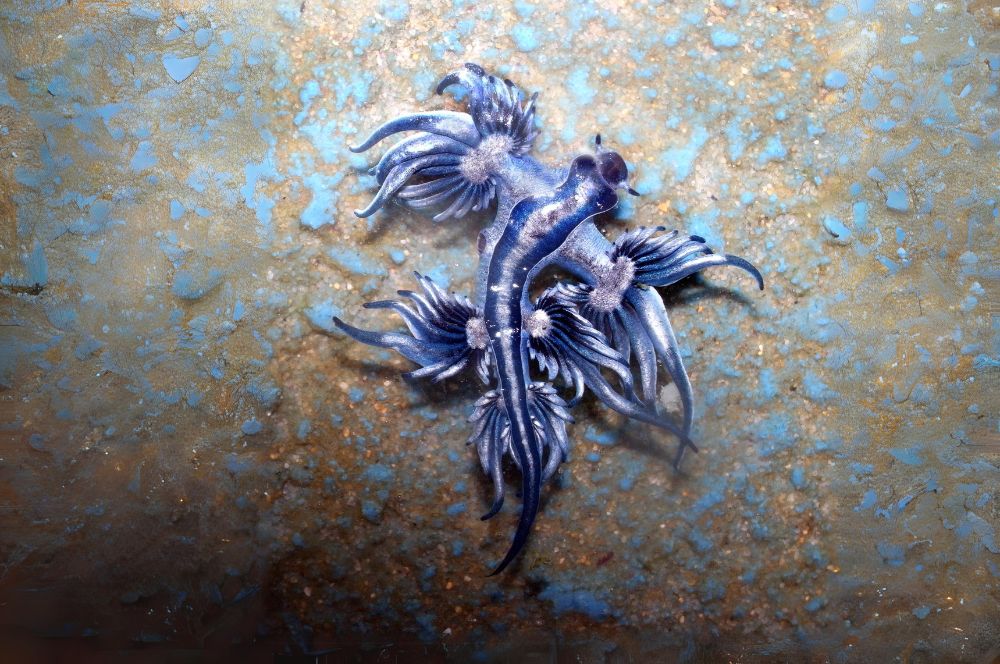
The blue and silver-grey hues of the blue dragon serve a multi-purpose role in its survival. The blue upper side blends with the ocean’s vastness, while the completely silver-grey underside mirrors the sparkling sea surface, both forms of countershading that confuse predators. Moreover, this coloration reflects harmful sunlight, suggesting a role in protecting the blue dragon from ultraviolet damage—a clever adaptation to life in the sun-drenched southern Pacific.
Reproduction and Lifecycle of the Blue Sea Slug
The life cycle of the blue sea slug includes the following stages:
-
As hermaphrodites, they possess both male and female reproductive organs.
-
They require a partner for fertilization.
-
The mating rituals of blue sea slugs are a delicate dance, with both individuals simultaneously acting as male and female.
After mating, they lay their eggs on floating objects, such as driftwood, where the larvae emerge as the newest generation of ocean wanderers.
Mating Rituals of the Blue Sea Slug
The blue sea slug’s mating process is a harmonious exchange of life-giving potential. Carefully engaging with one another, the blue dragons’ penises form long, curved shapes that facilitate reciprocal mating. This intricate dance ensures that the species continues to thrive without causing harm to one another, a wonder of marine biology that highlights the importance of each individual in the continuation of the species.
The Journey from Egg to Ocean Wanderer
Upon completion of their mating ritual, blue dragons deposit their eggs onto the floating remnants of their prey, where they remain until the larvae hatch and begin their journey through the ocean basins. This lifecycle, from egg to free-swimming pelagic creature, encapsulates the essence of the blue dragon’s existence—a cycle of renewal that takes place on the ocean’s surface and beneath the waves.
The Sting of the Blue Dragon: A Cautionary Tale
The sting of the blue dragon tells a story of defense evolving into offense. Encounters with this enigmatic sea creature can result in a cocktail of unpleasant symptoms, from pain and nausea to dermatitis. Such reactions are particularly acute when sensitive skin areas come into contact with the blue dragon’s potent sting. The recommended course of action mirrors that for a blue bottle sting, emphasizing the shared heritage of their venomous capabilities. It is a stark reminder that beauty in nature can often be accompanied by hidden dangers.
Although blue dragons bear a potentially dangerous sting, incidents are less frequent than those caused by their prey, the Portuguese man o’ war. The absence of long trailing tentacles in blue dragons makes accidental stings less likely, yet they remain a risk for the unwary. Our interactions with these creatures, especially when they are washed ashore in groups known as ‘blue fleets,’ should be respectful and cautious to avoid the painful consequences of their hidden defenses.
When Defense Turns Offensive: The Blue Dragon's Sting
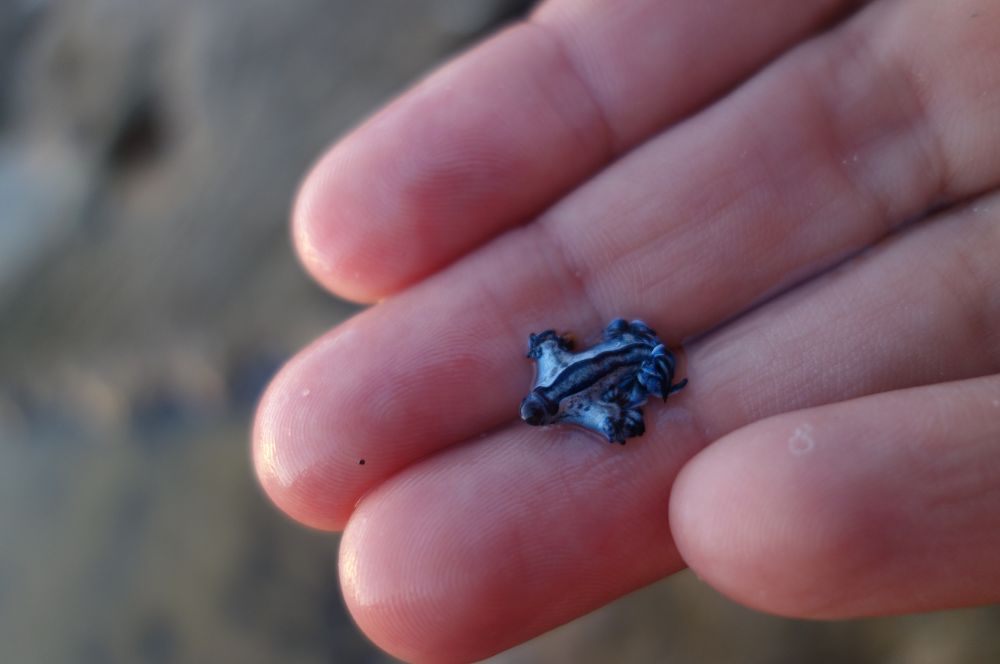
The sting of the blue dragon is more than just a biological attribute; it’s a powerful weapon sourced from the very prey it consumes. Integrating the potent nematocysts of the Portuguese Man O’ War into its own tissue, the blue dragon ensures that any predator daring to threaten it will face a potentially dangerous sting. This defense mechanism, a result of the blue dragon selectively storing larger nematocysts, is a marvel of evolutionary strategy, turning the tables on the natural order of prey and predator.
The medical community advises that those who fall victim to the blue dragon’s sting seek professional assistance, as the sting’s severity can vary and no standardized treatment protocols exist. The concentrated venom within the blue dragon’s cerata can deliver a sting that is surprisingly powerful for such a small creature, a clear indicator of the intricate relationships and adaptations that have developed within the marine ecosystem.
Human Interactions and Sting Incidents
Although rare, the sting of the blue dragon can occur, especially under circumstances where these creatures are mishandled. Severe stings have been reported during interactions where blue dragons, sometimes found en masse after a storm, are thrown or handled carelessly. Such incidents typically transpire when blue dragons are washed ashore, their stinging cells coming into contact with the delicate skin of unsuspecting humans.
The presence of ‘blue fleets’ on beaches signals not only an interaction with coastal ecosystems but also a potential risk for those engaging with these washed-up wonders.
Summary
Through the lens of marine biology, the blue dragon, Glaucus atlanticus, emerges as a captivating subject of study and admiration. From its ethereal beauty and rare sightings to its ingenious survival strategies and venomous sting, the blue dragon encapsulates the mystery and majesty of the ocean’s hidden realms. As we delve deeper into the life of this pelagic wonder, we are reminded of the ocean’s vast biodiversity and the continuous need to explore, understand, and protect its inhabitants. May the blue dragon continue to inspire awe and respect, serving as a beacon of the ocean’s untold stories.
Frequently Asked Questions
Can blue dragons be pets?
No, blue dragons cannot be kept as pets due to their specific dietary needs that are hard to cater to in a home environment. It is impossible to find suitable food for them at a pet store.
Are blue dragons dangerous to humans?
Although blue dragons have a potentially dangerous sting, encounters leading to stings are rare, but it is best to handle them with caution or avoid them altogether to prevent any harm.
How do blue dragons float on the ocean's surface?
Blue dragons float on the ocean's surface by using a gas-filled sac in their stomachs and navigating with their cerata. This enables them to stay afloat and move through the water effortlessly.
What do blue dragons eat?
Blue dragons primarily feed on venomous marine creatures, such as the Portuguese man o' war, and store their stinging nematocysts for defense.
Can blue dragons be found worldwide?
Yes, blue dragons can be found worldwide, living in warm temperate and tropical waters, with recent sightings in new regions due to environmental changes.
Related Posts
-
Discover the Biggest Fish: Giants of…
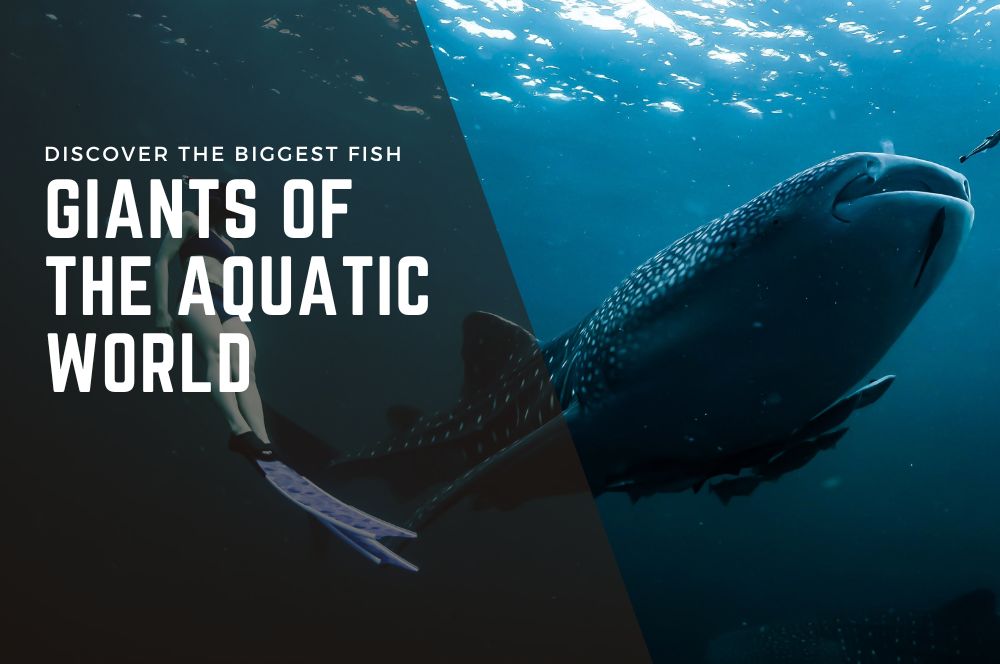
Discover the Biggest…
Discover the Biggest Fish: Giants of the Aquatic World The whale shark reigns supreme as the ocean's gentle […] -
Discover Sydney's Underwater Rainforests:…
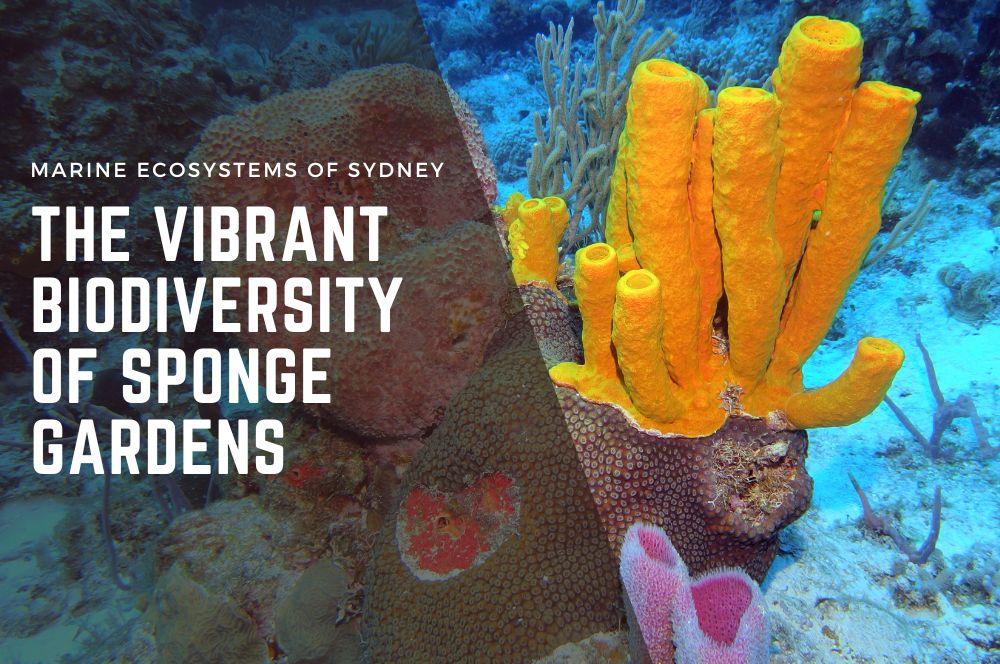
Discover Sydney's Underwater…
Exploring the Vibrant Biodiversity of Sponge Gardens in Marine Ecosystems of Sydney Sponge gardens are underwater […] -
Discovering the Blue Groper | A tribute…
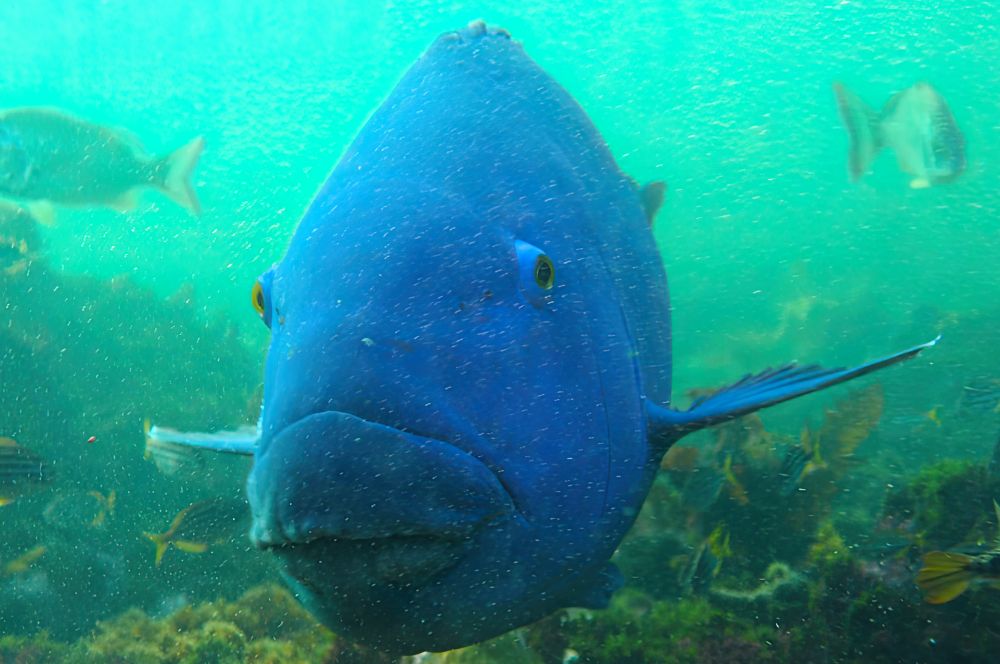
Discovering the Blue…
Discovering the Blue Groper: An Insight into Australia's Gentle Marine Giant This blog serves as a heartfelt […] -
Diving with the Elusive Weedy Sea Dragons
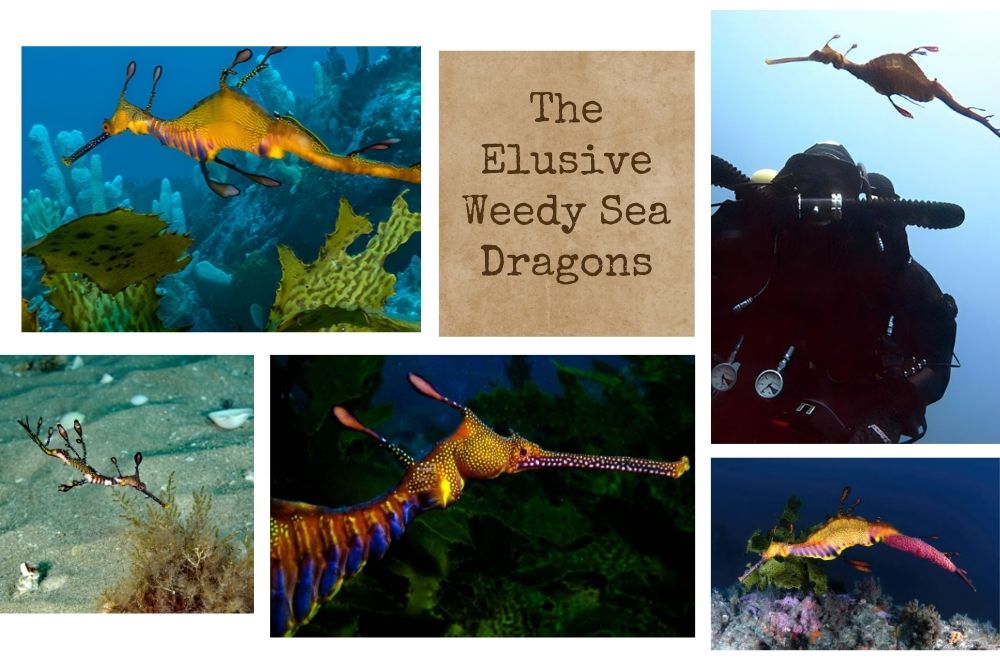
Diving with the Elusive…
Diving with the Elusive Weedy Sea Dragons: An Unforgettable Marine Adventure Have you ever dreamt of encountering […]
Recent Posts






